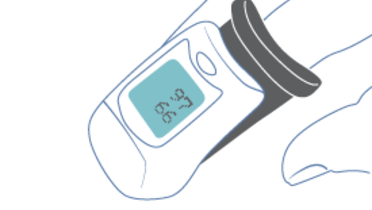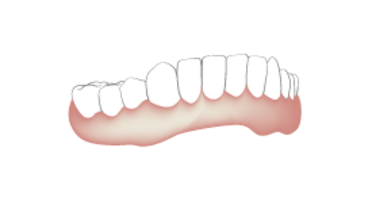-
0
Patient Assessment
- 0.1 Patient demand
- 0.2 Overarching considerations
- 0.3 Local history
- 0.4 Anatomical location
- 0.5 General patient history
-
0.6
Risk assessment & special high risk categories
- 5.1 Risk assessment & special high risk categories
- 5.2 age
- 5.3 Compliance
- 5.4 Smoking
- 5.5 Drug abuse
- 5.6 Recreational drugs and alcohol abuse
- 5.7 Parafunctions
- 5.8 Diabetes
- 5.9 Osteoporosis
- 5.10 Coagulation disorders and anticoagulant therapy
- 5.11 Steroids
- 5.12 Bisphosphonates
- 5.13 BRONJ / ARONJ
- 5.14 Radiotherapy
- 5.15 Risk factors
-
1
Diagnostics
-
1.1
Clinical Assessment
- 0.1 Lip line
- 0.2 Mouth opening
- 0.3 Vertical dimension
- 0.4 Maxillo-mandibular relationship
- 0.5 TMD
- 0.6 Existing prosthesis
- 0.7 Muco-gingival junction
- 0.8 Hyposalivation and Xerostomia
- 1.2 Clinical findings
-
1.3
Clinical diagnostic assessments
- 2.1 Microbiology
- 2.2 Salivary output
-
1.4
Diagnostic imaging
- 3.1 Imaging overview
- 3.2 Intraoral radiographs
- 3.3 Panoramic
- 3.4 CBCT
- 3.5 CT
- 1.5 Diagnostic prosthodontic guides
-
1.1
Clinical Assessment
-
2
Treatment Options
- 2.1 Mucosally-supported
-
2.2
Implant-retained/supported, general
- 1.1 Prosthodontic options overview
- 1.2 Number of implants maxilla and mandible
- 1.3 Time to function
- 1.4 Submerged or non-submerged
- 1.5 Soft tissue management
- 1.6 Hard tissue management, mandible
- 1.7 Hard tissue management, maxilla
- 1.8 Need for grafting
- 1.9 Healed vs fresh extraction socket
- 1.10 Digital treatment planning protocols
- 2.3 Implant prosthetics - removable
-
2.4
Implant prosthetics - fixed
- 2.5 Comprehensive treatment concepts
-
3
Treatment Procedures
-
3.1
Surgical
-
3.2
Removable prosthetics
-
3.3
Fixed prosthetics
-
3.1
Surgical
- 4 Aftercare
軟組織の術後管理
Key points
- 軟組織の術後管理は、コントロールのための定期的なリコールと同時に行うことができます。
- 術創の治癒を評価し、炎症や感染症の徴候があれば、対処します。
- 軟組織の状態に合わせ、仮義歯を綿密に適合させます。
軟組織の術後管理 – タイミング
無歯顎患者に関しては、軟組織のコントロールのために特にリコールの予定を組む必要はありません。典型的な術後コントロールでは、術後1~3日目、7~14日目および4~6週目に軟組織のコントロールおよび管理を行います。
リコール来院時の軟組織の評価
創の閉鎖および縫合の状態をチェックします。創離開が生じた場合は、再び縫合するか、必要に応じて縫合を追加します(24~48時間以内に限る)。
炎症または感染症の徴候(腫脹、滲出液、疼痛、出血等)がないか検査します。
プラークの蓄積および口腔衛生を評価します。プラークが認められた場合はこれを除去し、必要に応じて口腔衛生の再指導を行います。
手術の翌日から1日2~3回抗菌洗口液(0.2 %クロルヘキシジン等)で口腔内を洗浄するよう指示します。
術後7~14日目の2回目の術後リコールで再び評価を行います。
軟組織と仮義歯の適合性
組織の障害を回避するため、仮義歯の適合性を綿密に調整します。軟組織は治癒過程で変化するため、必要に応じてソフトリライニングを用い、義歯を適合させます。
バーおよびアバットメントが正確にデザインされているか、組織が過形成を引き起こしていないかチェックします。
縫合糸肉芽腫が生じた場合や、過剰な組織が形成されている場合は、軟組織レーザー、メスまたは電気メスで過形成組織を切除します。軟組織レーザーは出血が少なく、概ね良好な成績が得られます。また、軟組織により覆われたインプラントを露出することもできます。
インプラント埋入後にフィステルが生じた場合は、インプラントを露出し、アバットメントを固定します。
臨床トピック
Related articles
Questions
ログインまたはご登録してコメントを投稿してください。
質問する
ログインまたは、無料でご登録して続行してください
You have reached the limit of content accessible without log in or this content requires log in. Log in or sign up now to get unlimited access to all FOR online resources.
FORウェブサイトにご登録していただきますと、すべてのオンライン・リソースに無制限にアクセスできます。FORウェブサイトへのご登録は無料となっております。



